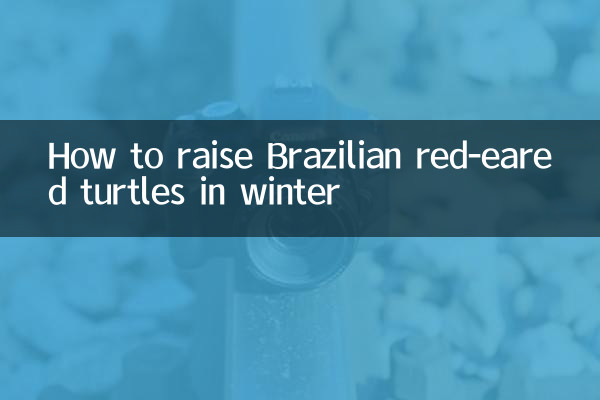How to raise Brazilian red-eared turtles in winter
As winter approaches, many pet owners are concerned about how to care for Brazilian red-eared turtles in low-temperature environments. As a common aquatic turtle, the Brazilian red-eared turtle is highly dependent on temperature and environment. Improper maintenance in winter may cause health problems. This article will combine the hot topics and hot content on the Internet in the past 10 days to provide you with detailed answers to the precautions for winter maintenance of Brazilian red-eared turtles.
1. Frequently Asked Questions about Brazilian Red-eared Turtle Winter Care

Based on recent popular discussions, the following are the most concerning issues in winter care for Brazilian red-eared sliders:
| FAQ | frequency of occurrence |
|---|---|
| Is heating needed in winter? | 85% |
| Feeding frequency and food selection | 75% |
| water quality management | 60% |
| Lighting requirements | 50% |
2. Core points of winter care for Brazilian red-eared turtles
1.temperature control
The Brazilian red-eared turtle is a cold-blooded animal and will enter hibernation when the temperature falls below 15°C in winter. If you do not want the turtle to hibernate, the water temperature needs to be maintained at 22-28°C. The following are recommended temperature ranges:
| environment | suitable temperature |
|---|---|
| water temperature | 22-28℃ |
| air temperature | 25-30℃ |
2.Feeding management
The metabolism of Brazilian red-eared turtles will slow down in winter, and the feeding frequency needs to be appropriately reduced. The following are winter feeding recommendations:
| temperature range | Feeding frequency |
|---|---|
| 22-28℃ | 2-3 times a week |
| 15-22℃ | 1 time a week |
| Below 15℃ | stop feeding |
3.water quality management
Water quality tends to deteriorate in winter and water bodies need to be replaced regularly. It is recommended to change 1/3 of the water volume every week and use water quality stabilizer.
4.Lighting requirements
Brazilian red-eared turtles require moderate amounts of UV irradiation to promote calcium absorption. In winter, when natural light is insufficient, it is recommended to provide 4-6 hours of UVB light exposure every day.
3. Common misunderstandings about winter care of Brazilian red-eared turtles
Based on recent discussions, the following are common misconceptions about winter care:
| Misunderstanding | Correct approach |
|---|---|
| No heating at all | Young and weak turtles must be warmed |
| overfeeding | Adjust feeding amount according to temperature |
| Ignore light | UVB light source must be provided |
4. Precautions for hibernating Brazilian red-eared turtles
If you choose to let your turtle hibernate naturally, you need to pay attention to the following things:
| steps | Operational points |
|---|---|
| Intestinal cleansing treatment | Stop feeding 2 weeks before hibernation |
| Hibernation environment | Humidity 70-80%, temperature 5-10℃ |
| Regular inspection | Check status every 2 weeks |
5. Summary
Winter maintenance of Brazilian red-eared turtles requires special attention to four aspects: temperature, feeding, water quality and light. Whether you choose heated breeding or natural hibernation, you need to make a reasonable choice based on the age, health and environmental conditions of the turtle. It is recommended that pet owners be fully prepared before winter comes to ensure that their turtles survive the winter safely.
Through the above structured data and detailed instructions, I believe you already have a comprehensive understanding of Brazilian red-eared turtle winter care. If you have any questions, please leave a message in the comment area for discussion.

check the details

check the details